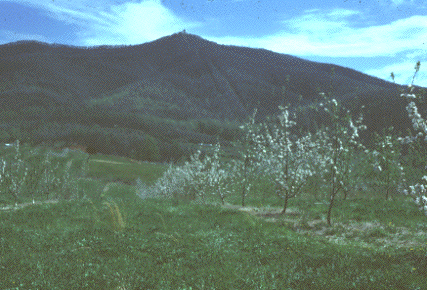
II. Hosts: In addition to apple, MB uses mullein as a major host plant. Pear, grape, wild rose, serviceberry and oak are sometime fed upon.
III. Description: The adults about 3 mm long, grey-brown. Nymphs are tiny, oval-shaped, translucent, becoming pale green as they mature.
IV. Biology: Eggs laid in soft woody tissue. MB overwinters in the egg stage in 1-2-year-old apple twigs. Hatch occurs from bloom though petal fall (most hatch at early petal fall). A few weeks after bloom, MB begins its life as a predator; reddish abdomens indicate that the nymphs have begun to feed on ERM. Adult MB disperse to mullein plants, where they reside through the summer. A few remain in the orchard, where they continue to be predators. There are 2-3 generations annually. In late fall, females return to apple trees and oviposit in twigs.
V. Injury: Feeding in apple especially serious in Red Delicious, also Empire, Gala, Jonagold, Golden Delicious, Northern Spy and Spartan. Nymphs feed from leaf veins but also on developing immature fruit. Feeding on young apples results in small upraised bumps (see Utah image of injury). There may be multiple stings on a single fruit. Most injured fruit abscise in the June drop. Injured fruit that remain on the tree develop corky areas, or bumps surrounded by conical depressions.
VI. Monitoring: Monitoring of
MB
should take place beginning at bloom and continuing for several
weeks
after
petal fall. Sample 2-3 times weekly, especially near petal
fall,
since hatch can be synchronous. Using a beating tray,
sample at
least
25 trees per block, one limb per tree. Workers in Ontario
have
developed
the following action thresholds: Red Delicious - 7
nymphs/25
trays.
Other varieties - 10 nymphs/25 trays. A petal fall spray
can be
timed
to MB emergence if needed.